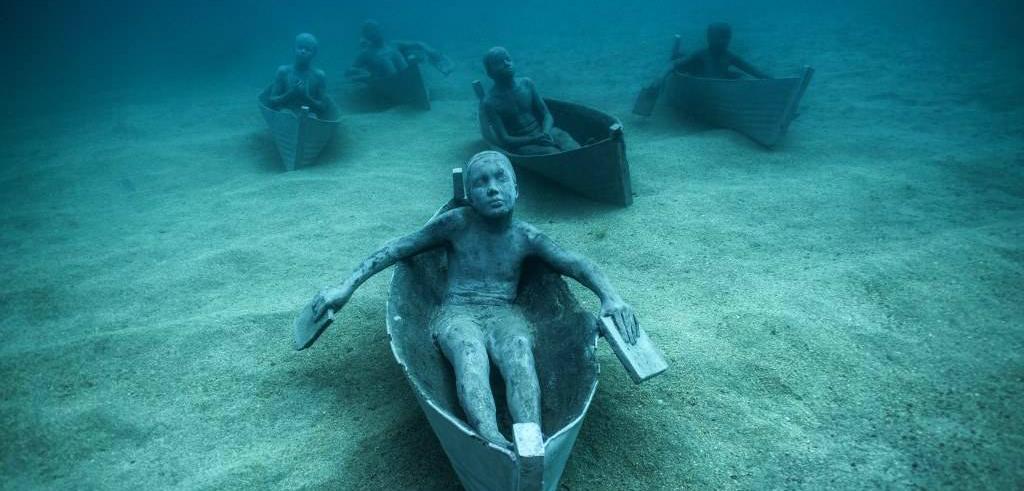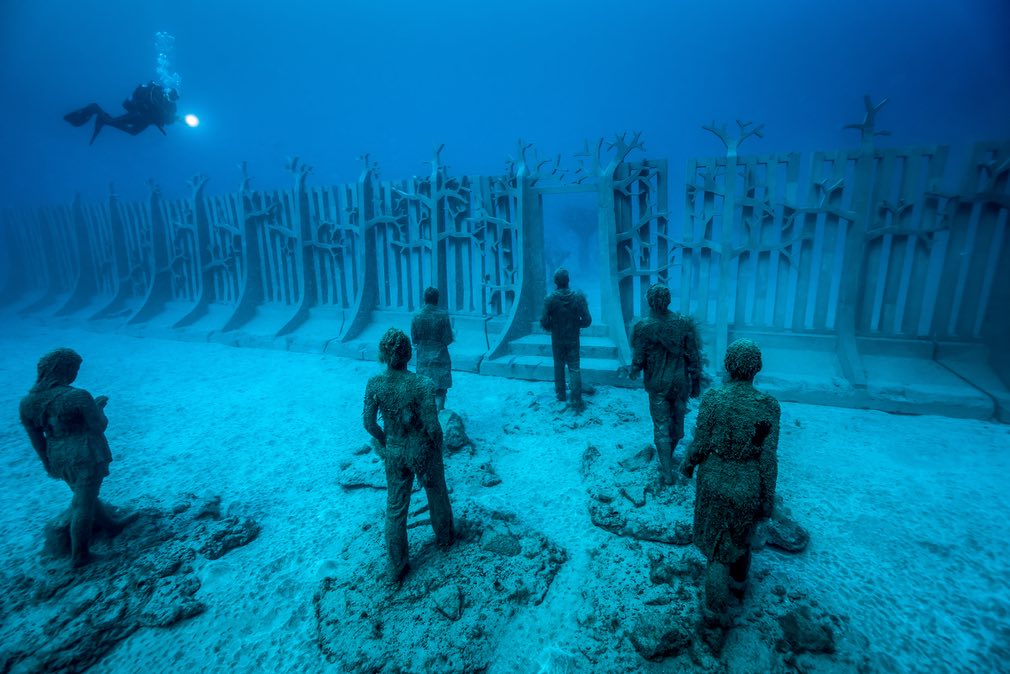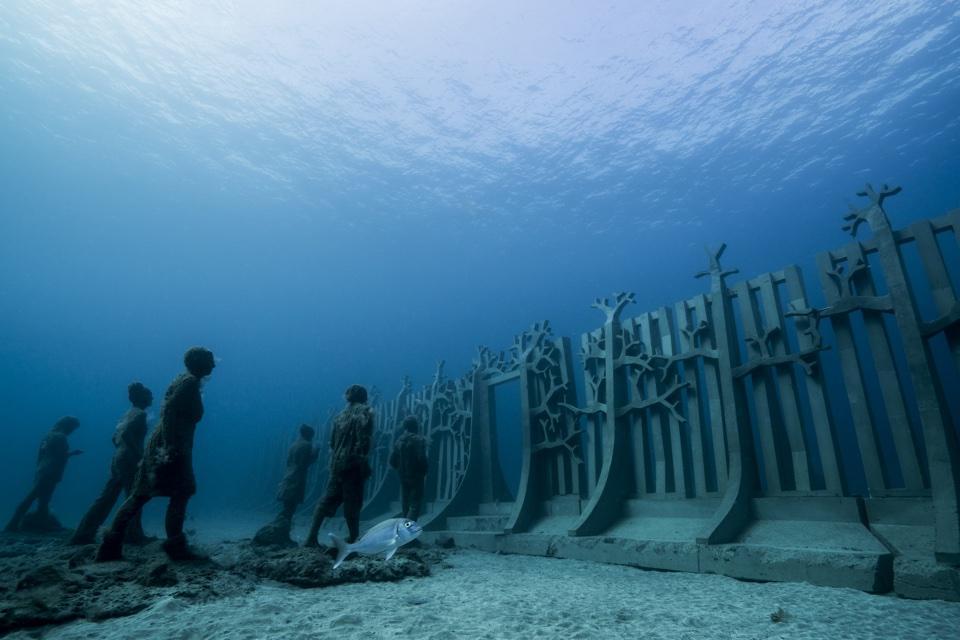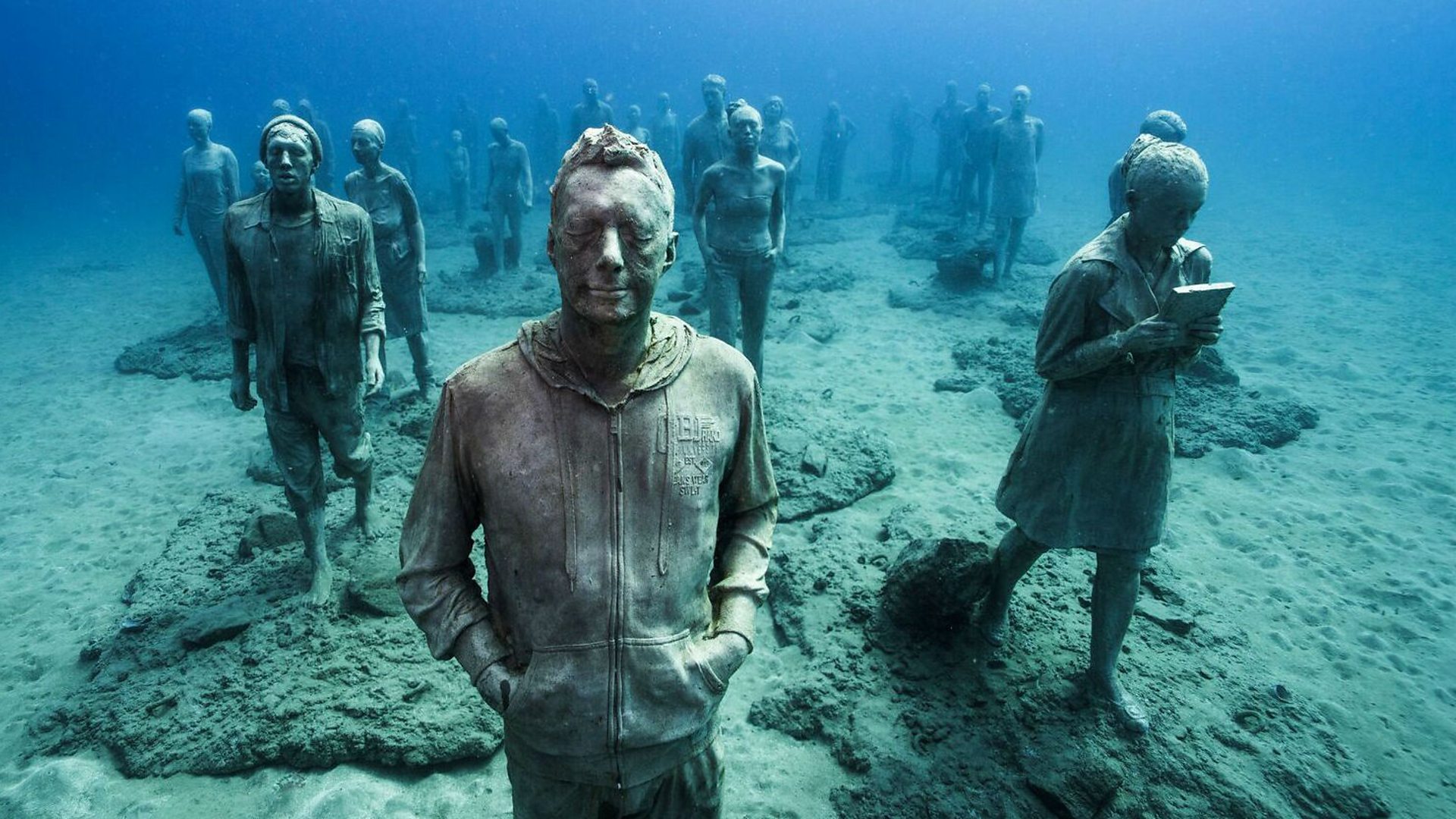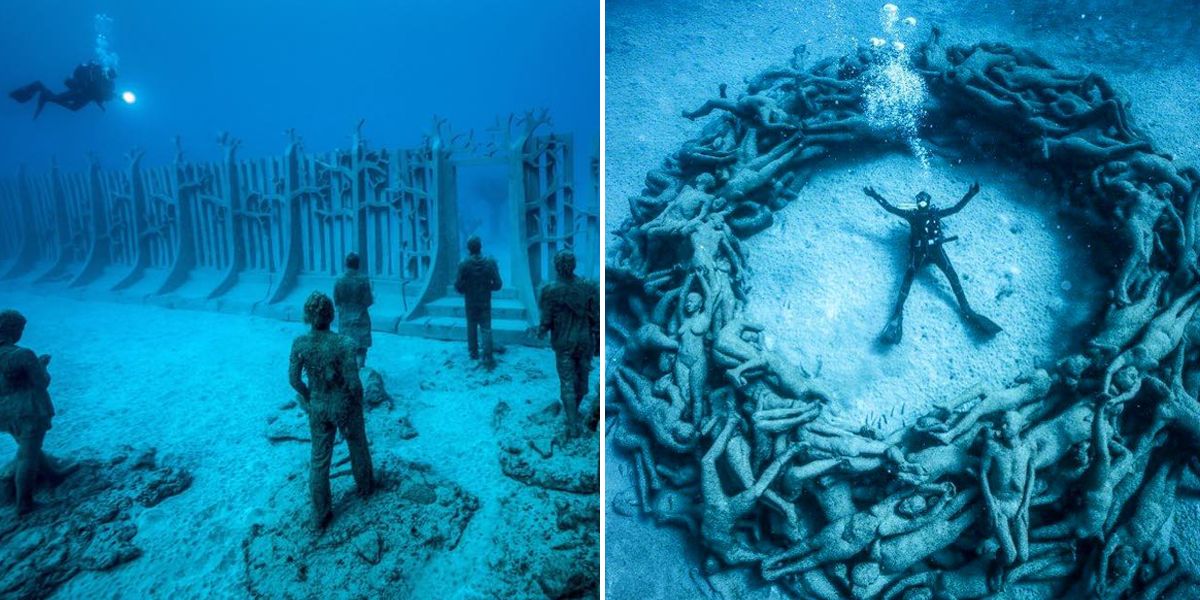To admire the works of artist Jason Decraire Taylor, you will need to put on a wetsuit. The Atlantic Museum is the first of its kind in Europe. It is located in the beautiful island of Lanzarote in the Canary archipelago. There are two others in the world, one in Cancún in Mexico and the other in Grenada in the West Indies. The ambition of this museum? Raise awareness of ecological issues and their impact on human life.

The underwater museum
It took the British artist three years to set up these 12 installations comprising 300 human-sized statues. These have been installed 15m below the sea surface on a stretch of white sand in the bay of Las Coloradas, in Playa Blanca a rapidly expanding resort. As in most of his previous underwater works the bodies and faces were modeled after local inhabitants. The installation required the mobilization of a team of divers and crane boats.
The largest work is titled “Crossing the Rubicon”. It is a large barrier 30 m long and 40 statues with human figures. The whole installation weighs more than 100 tons. Each of these characters, some with eyes glued to their smartphones, advance towards a small opening that crosses the great barrier. It is about denouncing the absurdity of barriers in a world where we must function as humanity in the face of environmental challenges.
An “eco-artistic” work
But the approach goes far beyond the artistic message alone. For Jason Decaire Taylor, it’s also about giving back to the oceans. These sculptures become sorts of natural barriers on which the aquatic flora gathers. It is indeed a question of recreating artificial reefs. A true ecosystem is reborn over time, transforming a human creation into a natural habitat for underwater organisms. It is an ephemeral art by which the trace of man disappears by the reconquest of underwater life on a space that belongs to it. When he talks about his work, the artist modestly affirms “that no human achievement can match the beauty of nature. By attracting visitors to these creations, it is also a question of unclogging the fragile environments disturbed by divers. He claims that tourists who visited one of his facilities in the Bahamas, “the giant Atlas”, alerted the media to a major oil leak from a local refinery. Their action made it possible to put pressure on the government, which took action to immediately resolve the situation. The approach of the British artist appears to be of fundamental interest since the World Resources Institute affirms that in 2050 all the coral reefs will be in danger of extinction.
